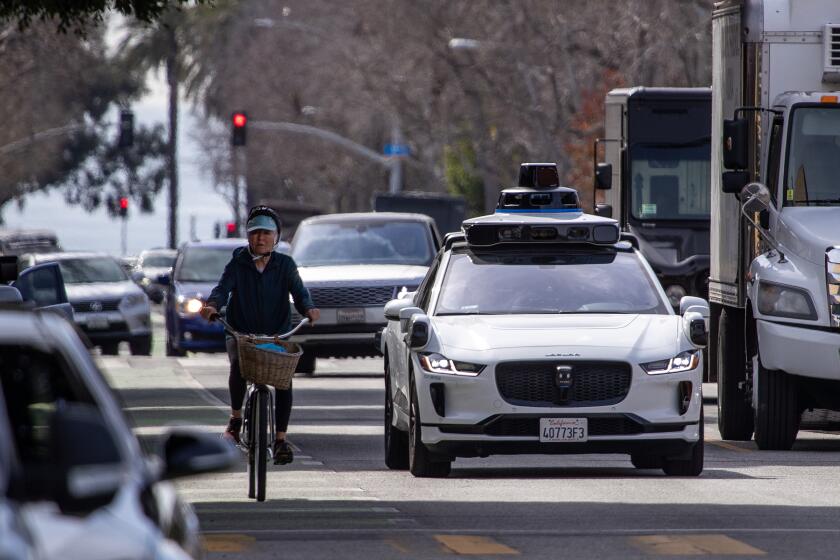October retail sales data are better than expected
- Share via
The Black Friday shopping rush may be slightly less of a nail-biter for retailers after government data showed better-than-expected sales in October.
Retail sales jumped 0.4% last month, the U.S. Census Bureau said Wednesday, handily exceeding the 0.1% month-over-month increase anticipated by economists surveyed by Bloomberg. And the September performance, which caused deep concern when initially reported as a 0.1% decline, was revised up to reflect no change.
In total, October sales reached $428.1 billion, a 3.9% boost from October 2012.
Americans may be feeling wealthier because of stock market gains, cheaper fuel and indications of an improving economy, according to Lindsey Piegza, chief economist at Sterne Agee. Tepid employment expansion and minimal income growth in recent quarters don’t seem to be quelling consumers’ willingness to spend, she wrote in a note to clients.
“Going forward, sustained job creation and bigger income checks are needed to maintain heightened spending patterns, but at least for the moment, short-term optimism may result in more than coal for retailers this holiday season,” she said.
The government retail sales data are the last major marker of industry health before next week’s Black Friday consumption frenzy — considered the traditional kickoff to holiday shopping. The season can account for up to 40% of a retailer’s annual revenue.
But this year, retailers are operating in a difficult environment, and many are opening earlier than ever, cutting into the Thanksgiving holiday.
The period between Thanksgiving and Christmas is one week shorter than it was last year, giving retailers less time to attract gift buyers. The effects of the government shutdown and the payroll tax increase are still lingering.
Wal-Mart Stores Inc., Kohl’s Corp. and J.C. Penney Co.’s pre-holiday sales have all been disappointing. Sales at non-publicly traded retailers are growing at an annual rate of less than 1% so far this year, the slowest pace since 2009, according to financial information company Sageworks.
“The apprehension U.S. consumers currently have about the economy couldn’t have come at a worse time for private retailers,” said Libby Bierman, a Sageworks analyst, in a statement. “Unfortunately, due to the combination of slowing sales growth and declining consumer confidence, it doesn’t look like the holiday season is going to be the solution U.S. retailers need.”
Highland Park resident Thomas Page, a sound engineer and musician, said the government stalemate last month had a ripple effect that caused many companies to cancel events or sharply scale back functions that require audio services.
As a result, business has been intermittent, leading Page to check ads for discounts and buy necessities in bulk. A year ago, he was buying music equipment, clothing and items to fill his new apartment.
“I’ve been squeezed pretty hard this past fall,” Page, 32, said. “Most of my income that’s not going toward rent or bills at this point is going toward food. I have to prioritize what I need.”
Still, Wednesday’s government report gave retailers room to hope.
Vehicle sales rose 1.4% from September to October, rocketing up 11.9% year over year. Gasoline station sales slipped 0.6% from September.
With the auto and fuel categories stripped out, along with food service, pure retail sales were up 0.3% month to month and up 3.9% from 2012.
Electronics and appliance retailers enjoyed a 1.4% upswing from September and a 4.8% surge year over year. Clothing and accessories stores saw the same monthly boost, rising 3.8% from last year.
Though struggling retailer J.C. Penney Co. missed Wall Street’s estimates when it announced earnings for the third quarter that ended Nov. 2, investors were still cheered by evidence of gradual improvement.
The chain said Wednesday that sales slipped 5.1% to $2.78 billion; analysts had expected $2.79 billion. The company suffered a net loss of $489 million, or $1.94 a share; excluding special items, the loss was $457 million, or $1.81 a share. The forecast had been for a loss of $1.77 a share.
Sales at stores open at least a year, called same-store sales, were down 4.8% for the quarter. But J.C. Penney said that same-store sales in October were up 0.9%.
It also said online purchases generated $266 million in revenue, a 24.5% year-over-year increase.
J.C. Penney stock rose 73 cents, or 8.4%, to $9.44 a share.
The National Retail Federation said it was optimistic about sales in the coming weeks.
“Consumers seem to have found some sense of confidence, driven, in part, by lower gas prices,” said Matthew Shay, the trade group’s chief executive, in a statement. “While positive gains were seen in most retail categories, retailers will continue to rely on heavy promotions to drive traffic and sales this holiday season.”
A separate report Wednesday from FTI Consulting forecast a 4.9% year-over-year increase in retail sales this holiday season, making it an average year by historical standards. Researchers said that deep discounts from large chains such as J.C. Penney could cause copycat behavior in other retailers, pressuring profit margins.
But that might not be enough to draw out shoppers such as Glendale actor Edmund Lupinski, 60.
His son left for college this year, so Lupinski is scaling back his spending by about a third — partly because there’s one fewer person in the household with day-to-day expenses, but also because he needs to pay the bills for school.
Last month, Lupinski replaced a broken patio table and made some small upgrades in his home, but for Christmas, he said he plans to spend “very little.”
“Our cutbacks are coming across the board wherever we can make them,” he said. “I just like to keep this holiday less commercial for friends and family.”
Twitter: @tiffhsulatimes
More to Read
Inside the business of entertainment
The Wide Shot brings you news, analysis and insights on everything from streaming wars to production — and what it all means for the future.
You may occasionally receive promotional content from the Los Angeles Times.










